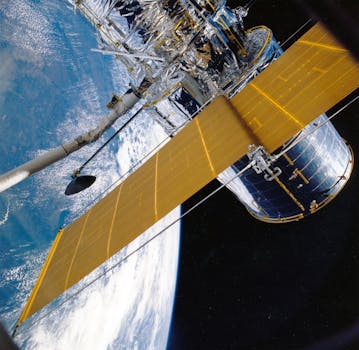
The Future of Satellites: Revolutionizing Global Connectivity
The future of satellites is rapidly evolving, with advancements in space technology and increasing demand for global connectivity. As we move forward in this digital age, satellites are playing a crucial role in providing internet access, navigation, and communication services to remote and underserved areas. In this article, we will delve into the latest trends and innovations in the satellite industry and explore the future of satellites.
Introduction to Satellites
Satellites have been an integral part of our daily lives for decades, providing us with essential services such as television broadcasting, weather forecasting, and navigation. However, the satellite industry is undergoing a significant transformation, driven by technological advancements and changing market demands. The increasing need for global connectivity, rising demand for satellite-based services, and declining costs of launching satellites into orbit are some of the key factors driving the growth of the satellite industry.
Advances in Satellite Technology
Recent years have seen significant advancements in satellite technology, including the development of smaller, more efficient, and cost-effective satellites. The introduction of nano-satellites and cube-sats has enabled the launch of constellations of satellites into low Earth orbit, providing global coverage and reducing the cost of launching satellites. Additionally, the use of advanced materials and propulsion systems has improved the performance and lifespan of satellites.
Another significant development in satellite technology is the use of high-throughput satellites (HTS), which offer faster data speeds and greater capacity than traditional satellites. HTS satellites use multiple spot beams to provide targeted coverage, reducing interference and increasing the overall efficiency of the satellite. This technology has enabled the provision of high-speed internet services, even in remote and underserved areas.
Applications of Satellites
Satellites have a wide range of applications, including communication, navigation, Earth observation, and weather forecasting. The increasing demand for satellite-based services has led to the development of new applications, such as satellite-based internet of things (IoT) and satellite-based 5G networks. Satellites are also being used for scientific research, such as studying the Earth’s climate, monitoring natural disasters, and exploring the universe.
The use of satellites for communication purposes is one of the most significant applications. Satellites provide a means of communication for remote and underserved areas, where traditional communication infrastructure is lacking. Satellite-based communication services, such as satellite phones and satellite broadband, have become essential for emergency response, disaster relief, and rural connectivity.
Challenges and Opportunities
Despite the many advancements in satellite technology, there are still several challenges that need to be addressed. One of the major challenges is the issue of space debris, which poses a significant threat to the safety and sustainability of satellite operations. The increasing number of satellites in orbit has led to a rise in the amount of space debris, which can cause collisions and damage to operational satellites.
Another challenge is the need for regulatory frameworks to govern the use of satellites. The lack of clear regulations and standards has led to concerns over the use of satellites for military purposes, as well as the potential for satellites to be used for malicious activities. The development of regulatory frameworks will be essential for ensuring the safe and responsible use of satellites.
Despite these challenges, the future of satellites looks promising. The increasing demand for satellite-based services, combined with advancements in technology, is expected to drive growth in the satellite industry. The development of new applications, such as satellite-based IoT and 5G networks, is expected to create new opportunities for the industry.



